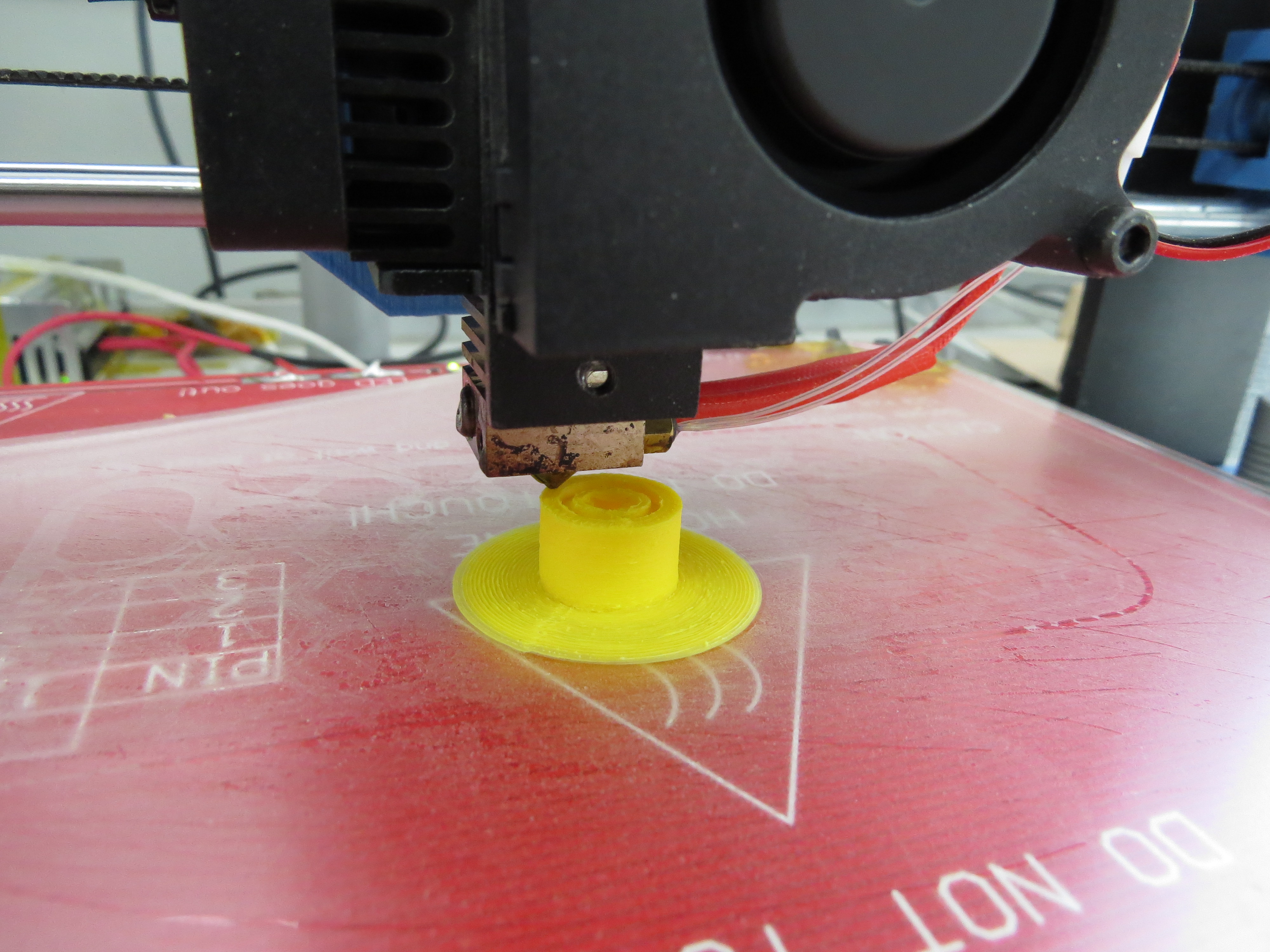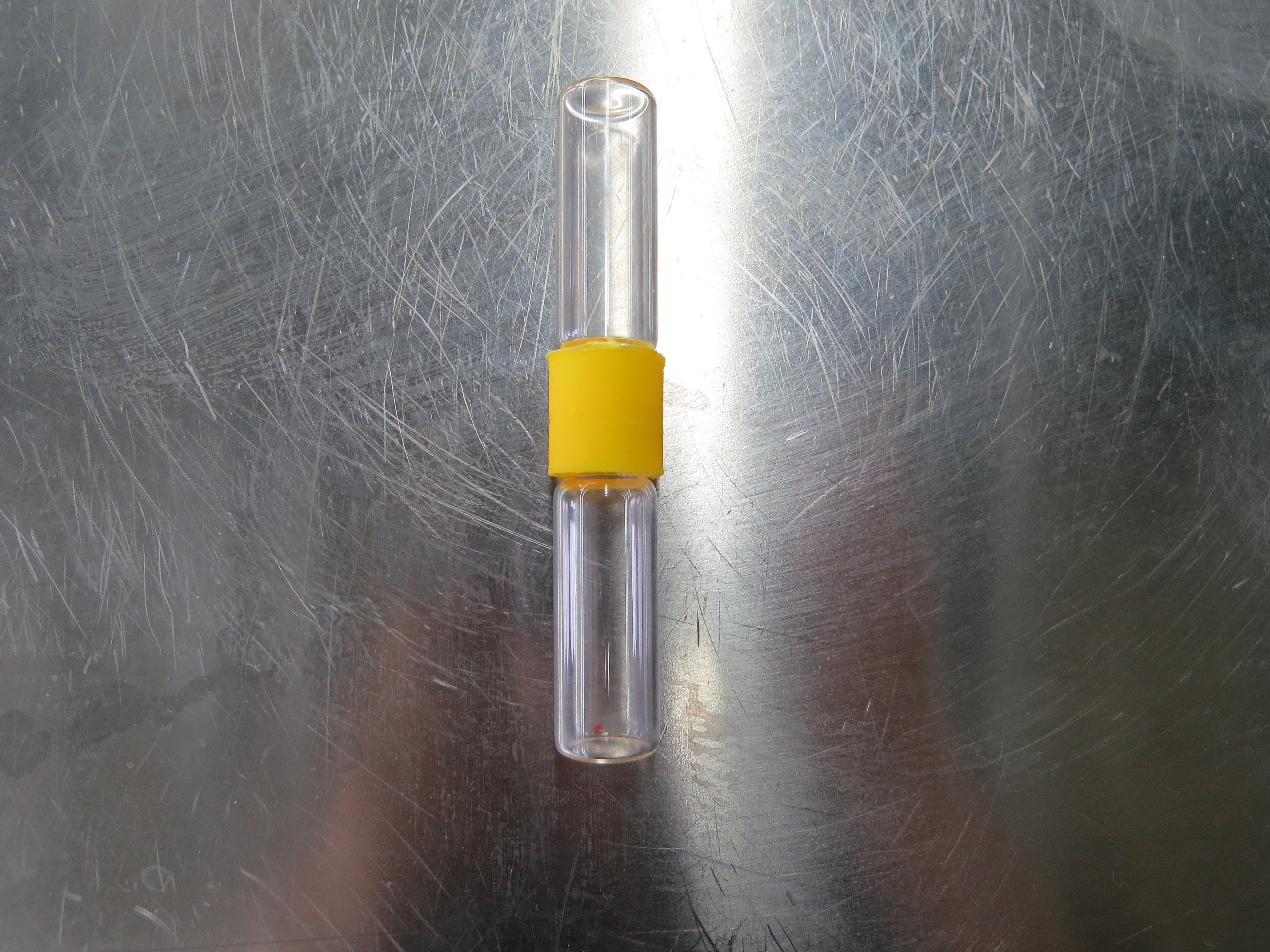- français
- English
Printing of the whole double cap
The first printing of the double cap was also performed at Hackuarium with Sam Sulaimanov, with a printer which uses the “Fused Deposit Modeling”. This time we used ABS, a thermoplastic polymer having a good impact resistance and a relatively rigidity despite is low weigth.
Here are the characteristics of the printing :
- Temperature : 235°C (for ABS)
- Material : ABS filament (1.75mm)
- 5mm nozzle
- 190*190 bed (temperature 70°C)

Printing of the whole double cap (step of the connector printing)
The major fear of printing this piece was the basis of the connector part. It is printed vertically and the 3D printer must create it without support. Finally, it was not a problem. The major problem came from the temperature of the piece. Because of the direction of the printing, the first layers are in contact of the bed at a temperature of 70°C, but the upper layers are in contact to air and the ABS tend to retract. So the diameter of the whole piece reduces with the height. Thus it is more difficult to screw the vial on the side with the connector, which becomes more complicated when the vial is protected by a seal. So the solution was to increase the scale of the printed piece by a few millimeters.
The positive part of this printing session is that the screw pitch matches the vial one. Finally we succeeded and we get a double cap with two sides that we can screw on the vial.
However we can make some critics about the technology of printing we use (“Fused Deposit Modeling”). It produces pieces which are not very smooth and it presents many deposit errors : we had to file especially in the screw pitch. But this method stays precise enough for the dimension of the double cap.
The price of this whole printed double cap is 0.06CHF (2 gram of ABS, length 0.69 meter). This is low cost, because we can buy large spools of ABS filament, and our piece is small and ligth.
So we can test it in real conditions. As expected, the seal is pierced by the connector after starting to screw and the two vials communicate by the connector. The double cap assures to return the device in a single part to the lab to destroy the GMO present inside.
Here is the result we get :

- Ce wiki
- Cette page
